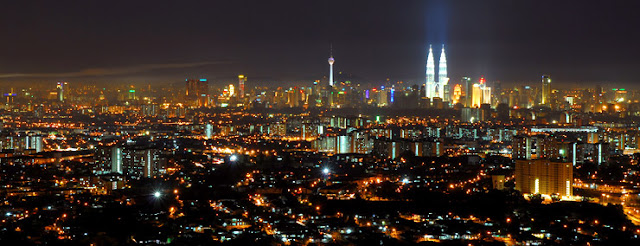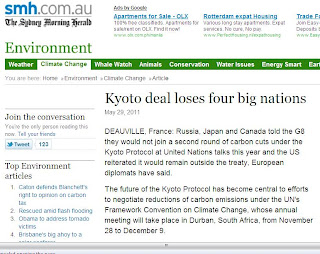Malaysia and Singapore's bright nights, 2015
* Originally posted on Nov. 21, 2015.
I was in Kuala Lumpur, Malaysia, last Sunday-Tuesday, for the IPRI 2015 launching + other visits arranged by IDEAS and SEANET. It was my second visit in KL this year, I was there last April for another SEANET event.
My 5+pm return MAS flight to Manila (arrival should have been 9:20pm) on Tuesday was cancelled, should be due to additional APEC security measures in Manila. I needed to go back home, so IDEAS got a new ticket for me, KL-SG-Mla via SG Air. Left KL Tuesday at 9:45pm, left SG at 12:20am, Manila by 4:30am.
So, I was able to see KL and suburbs at night from the air as I took the window seat. Again, like what I saw in Thailand last month when I arrived Bangkok at midnight (see Thailand's bright nights and nat gas power), Malaysia has a wide, huge area of well-lighted roads, houses and buildings.
This photo I got from the web, not from my camera. It shows KL center and suburbs. The dark areas are the many urban forest in KL.
The bright and well-lighted areas go beyond KL and suburbs. Stretched to other urban centers further down, to Johor and other cities bordering with Singapore.
Below, Singapore at night; again, this photo I got from the web, not from my camera. It simply captures the well-lighted city-state, from the shorelines to other sides.
I am glad that like Thailand, Malaysia and Singapore do not believe in mandatory switch to unreliable, intermittent wind and solar power made "cheaper" only because of various subsidies. They rely on the old, dependable coal and natural gas, for their electricity needs.
In 2012, these countries and economies were dependent on the following energy sources:
Thailand: 20% coal + 70.3% nat gas + 1.5% oil = 91.8% fossil fuel.
Malaysia: 41.5% coal + 46.6% nat gas + 4.5% oil = 92.6% fossil fuel.
Singapore: 84.3% nat gas + 13% oil = 95.3% fossil fuel.
Indonesia: 48.7% coal + 23.2% nat gas + 16.7% oil = 88.6% fossil fuel.
Vietnam: 17.9% coal + 35.8% nat gas + 2.7% oil = 56.4% fossil fuel.
Philippines: 38.8% coal + 26.9% nat gas + 5.8% oil = 71.5% fossil fuel.
Hong Kong: 70.3% coal + 27.3% nat gas + 2.1% oil = 99.7% fossil fuel.
S. Korea: 44.8% coal + 20.9% nat gas + 4.0% oil = 69.7% fossil fuel.
China: 75.8% coal + 1.8% nat gas and oil = 77.6% fossil fuel.
Source: ADB, Key Indicators for Asia and the Pacific 2015, Table 6.1






Comments
Post a Comment